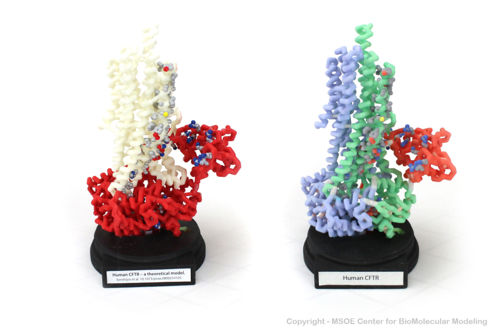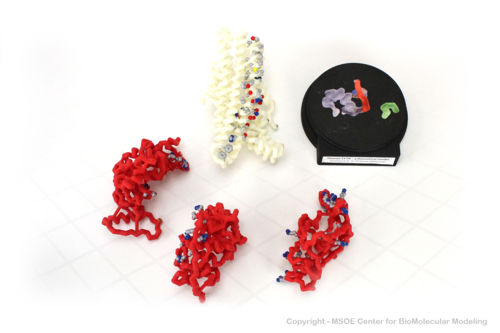Cystic fibrosis transmembrane conductance regulator (CFTR)
From Proteopedia
(Difference between revisions)
| Line 2: | Line 2: | ||
<StructureSection load='5UAK' size='340' side='right' caption='Cystic Fibrosis Transmembrane Conductance regulator' scene=''> | <StructureSection load='5UAK' size='340' side='right' caption='Cystic Fibrosis Transmembrane Conductance regulator' scene=''> | ||
The '''CFTR''' is a chloride channel, and is regulated by PKA phosphorylation, cAMP levels, and ATP/ADP ratios. Mutations in the CFTR cause the disease cystic fibrosis. | The '''CFTR''' is a chloride channel, and is regulated by PKA phosphorylation, cAMP levels, and ATP/ADP ratios. Mutations in the CFTR cause the disease cystic fibrosis. | ||
| + | |||
| + | CFTR is a mostly <scene name='78/785332/Secondary_structure/1'>alpha helical</scene> protein. The membrane spanning segments can be clearly seen with coloring by <scene name='78/785332/Hydrophobicity/1'>hydrophobicity</scene>, which shows hydrophobic residues in gray and hydrophilic residues in purple. | ||
One feature of the CFTR is a Walker motif, which is found in ATP binding proteins.It is also known as a P (or phosphate binding) loop. | One feature of the CFTR is a Walker motif, which is found in ATP binding proteins.It is also known as a P (or phosphate binding) loop. | ||
Revision as of 20:29, 16 October 2019
Cystic fibrosis transmembrane conductance regulator (CFTR)
| |||||||||||



